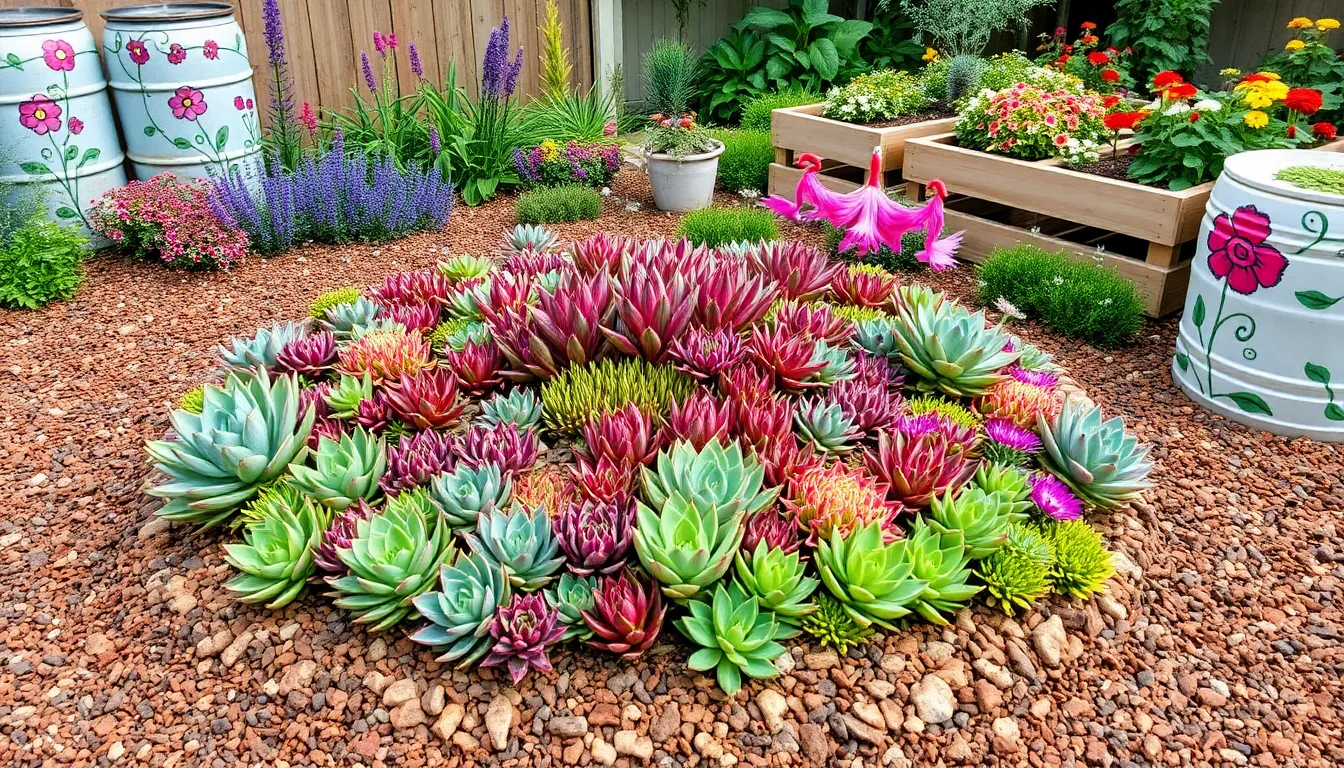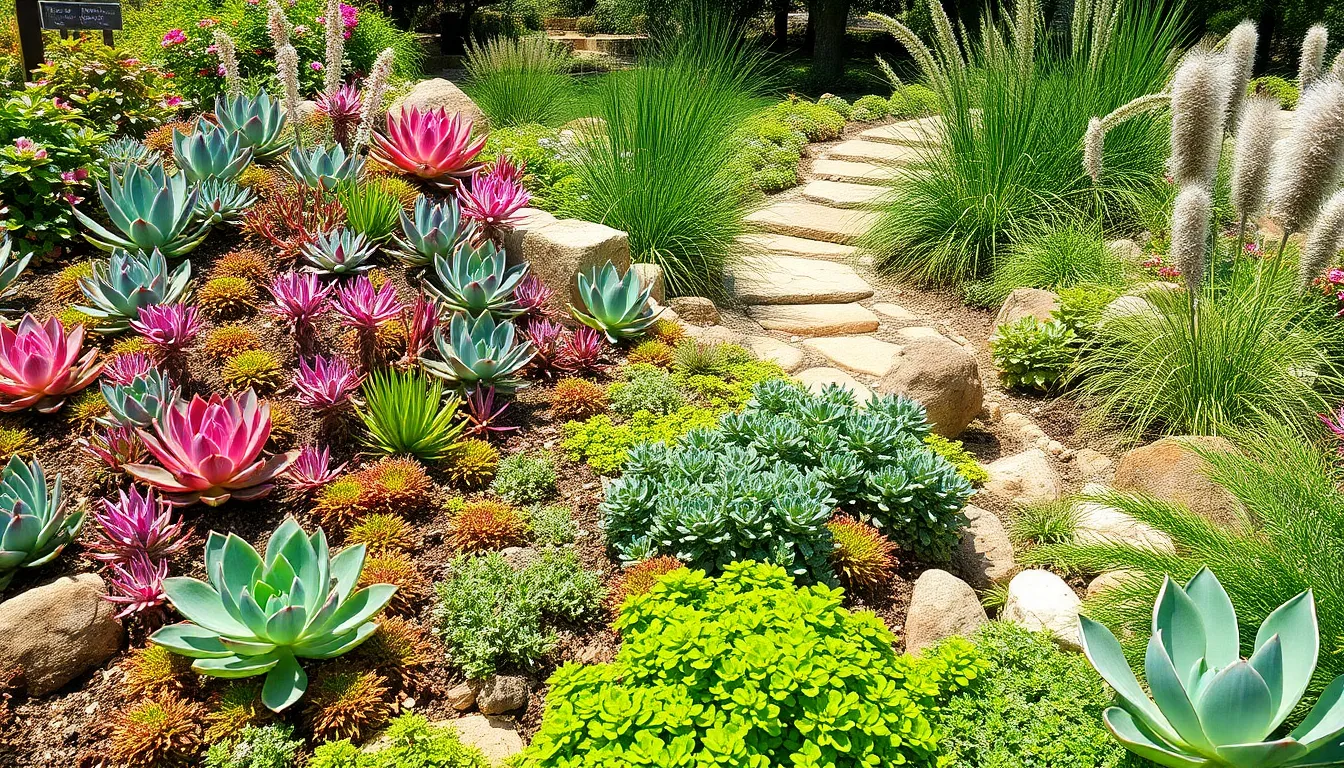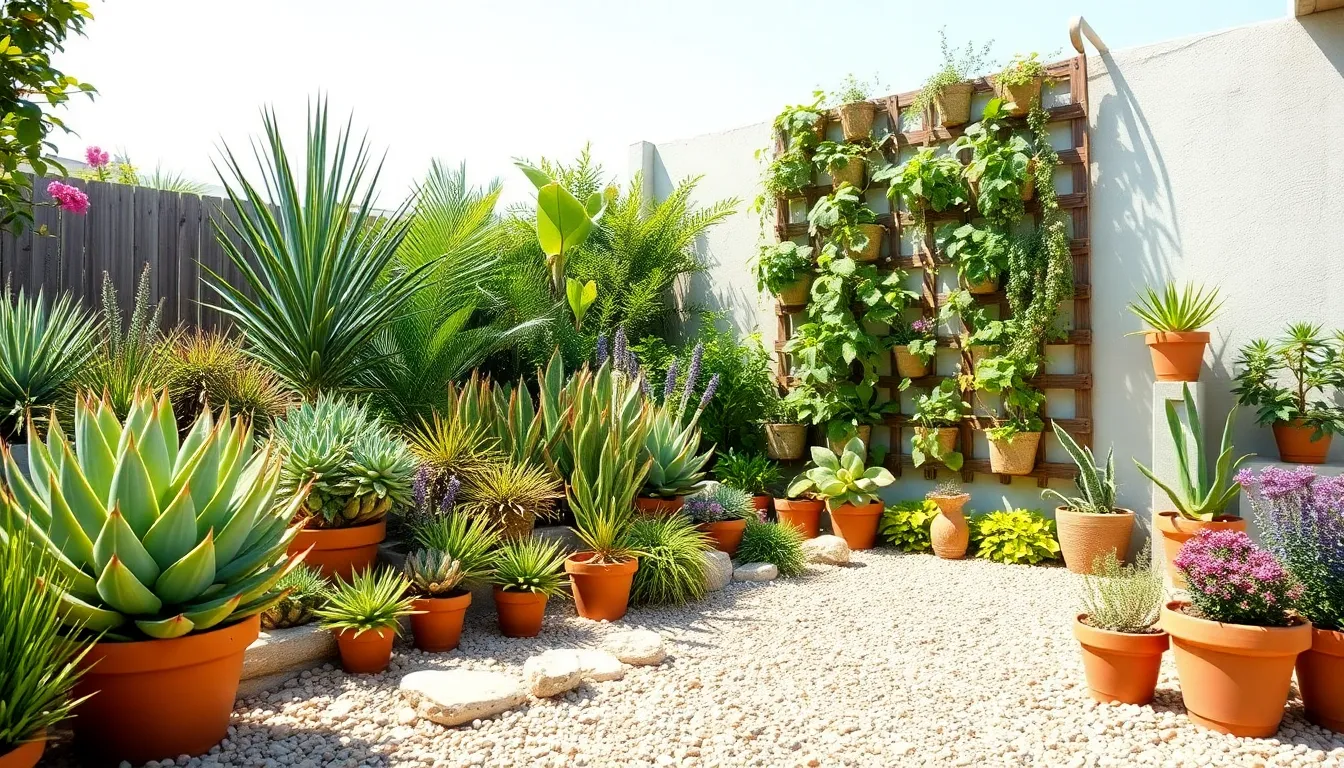Imagine a garden where vibrant colors burst forth, each bloom and leaf telling a story of resilience and beauty, even in the face of water scarcity. With climate change influencing weather patterns and water becoming an ever-precious resource, both novice and seasoned gardeners are learning to adapt their practices to conserve water while still nurturing stunning landscapes. Embracing water-saving techniques doesn’t mean sacrificing the allure of your garden; rather, it opens up a world of creative possibilities that marry sustainability with splendor.
This article will guide you through nine innovative techniques that promise to transform your garden into a water-wise haven. From choosing the right plants to implementing smart irrigation strategies, you’ll discover a treasure trove of ideas that will keep your garden flourishing, no matter the weather. Whether you’re starting your first garden or looking to refine your seasoned skills, these methods will empower you to cultivate a thriving, colorful oasis that respects our planet’s natural resources. Join us as we delve into the art of combining ecological mindfulness with the joy of gardening, ensuring your green space remains as vibrant as ever while caring for the Earth.
Choose Drought-Tolerant Flower Varieties
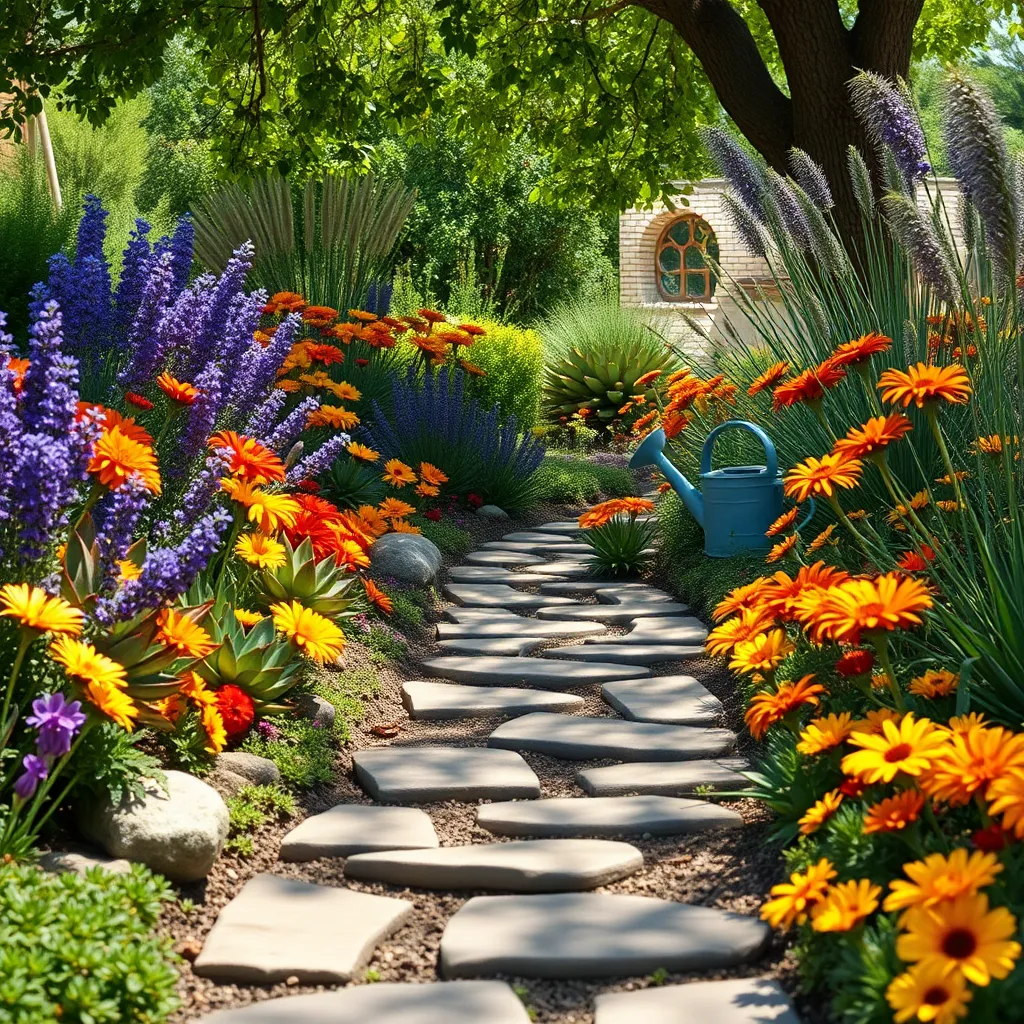
One of the most effective ways to conserve water in your garden is by choosing drought-tolerant flower varieties. These plants not only survive but thrive in dry conditions, making them an excellent choice for water-wise gardening.
Consider planting lavender, which is known for its aromatic blooms and ability to withstand dry spells. Ensure it gets full sun and well-draining soil to mimic its native Mediterranean habitat.
Another excellent choice is yarrow, which offers clusters of colorful flowers and attracts pollinators. Plant yarrow in sandy or rocky soil, and remember that it requires very little water once established.
If you’re looking for vibrant colors, the blanket flower is a stunning option. It thrives in poor to average soils and requires only occasional watering after the first growing season.
Incorporate Vibrant Native Plants
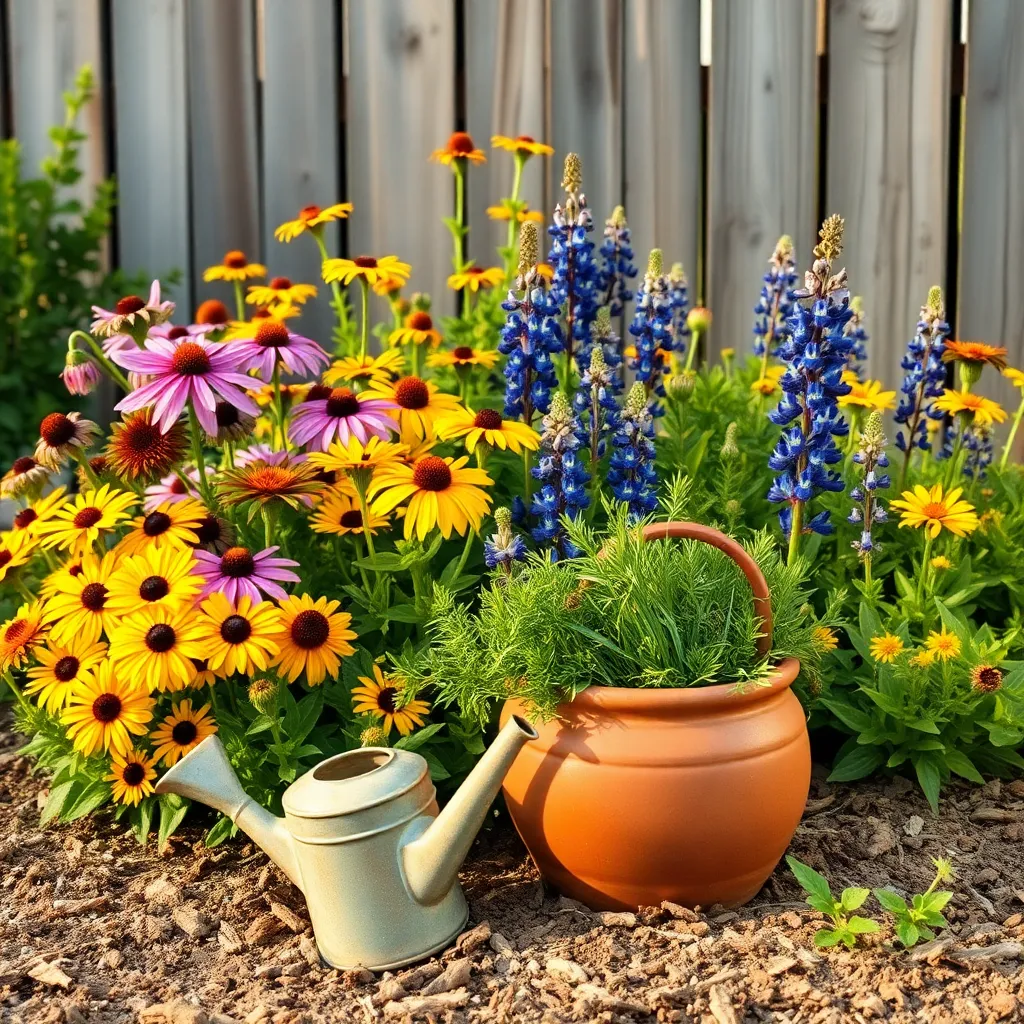
To bring color and resilience to your garden, consider incorporating vibrant native plants that are well-adapted to your local climate. Native plants typically require less water and maintenance, making them an ideal choice for eco-friendly gardening.
Begin by selecting species that are native to your region, as these plants have evolved to thrive in your local soil and weather conditions. For example, if you’re in the Midwest, consider planting purple coneflower or butterfly weed, both of which are stunning and drought-tolerant.
When planting, ensure you provide the right soil conditions by using a mix that mimics the natural environment of the native plants. Most native plants prefer well-draining soil, so consider adding sand or perlite if your soil is heavy and clay-like.
Water new plantings sparingly until they are established, typically during their first growing season. Once settled, native plants often require minimal supplemental watering, making them a perfect choice for water-saving gardens.
Utilize Colorful Mulch Layers
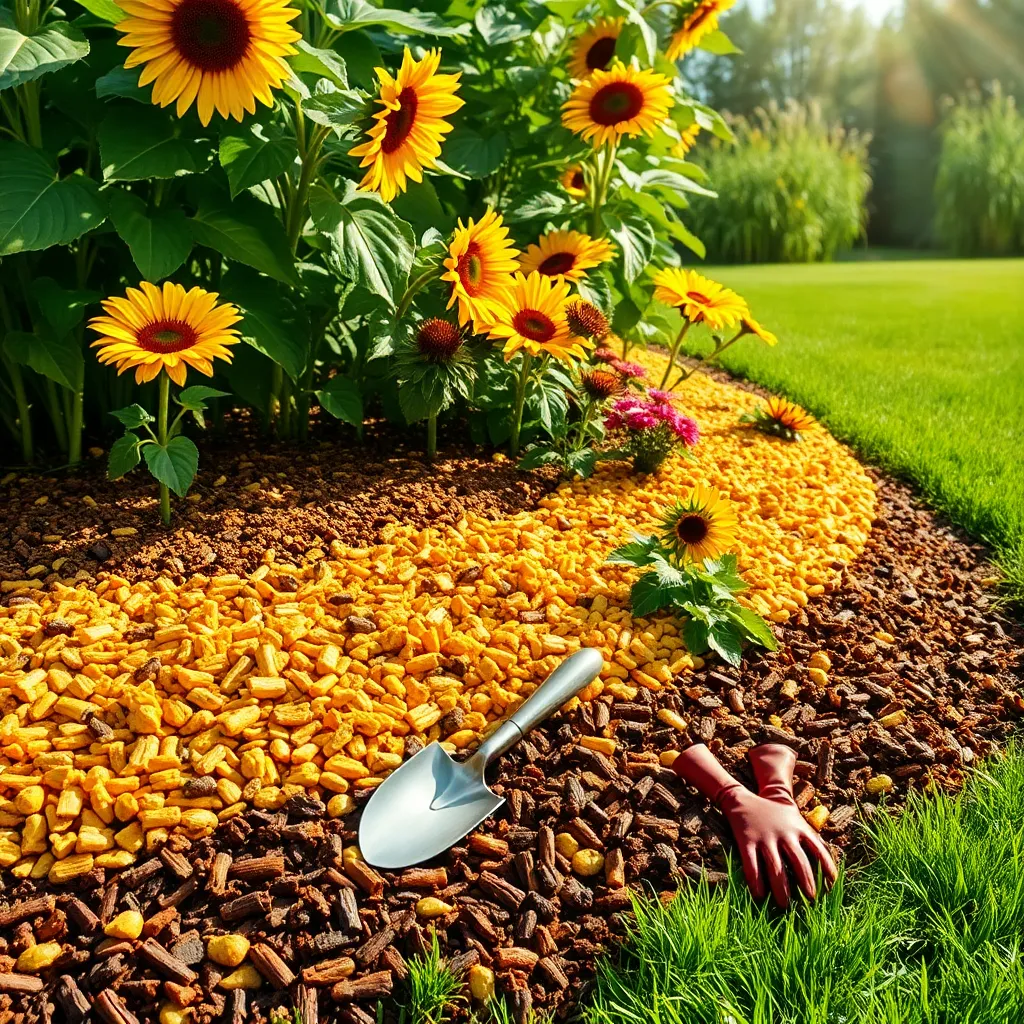
To create visually appealing and water-efficient gardens, consider using colorful mulch layers that not only conserve moisture but also add a splash of color. Organic mulches like bark or cocoa hulls come in various shades and can help keep soil temperatures stable, reducing stress on plants.
Start by selecting a mulch color that complements your plant palette. For beginners, an easy way to begin is to use natural shades like reddish-brown bark to create contrast with green foliage, which also enriches the soil as it breaks down.
Experienced gardeners might experiment with more vibrant options such as dyed wood chips in reds, blacks, or golds, which can highlight specific garden areas. When applying, aim for a layer about 2-3 inches thick to maximize moisture retention and weed suppression.
Ensure the mulch does not touch the stems or trunks of plants to prevent rot. Remember to replenish mulch annually to maintain its effectiveness and appearance, checking for signs of decomposition or compaction that might impede its benefits.
Create Drip-Irrigation Systems

Drip-irrigation systems can be a game-changer for water conservation in your garden. These systems deliver water directly to the plant roots, minimizing evaporation and ensuring efficient water use.
Consider starting with a basic setup using a hose, emitter tubing, and connectors. Beginners can easily configure these components to create a system that suits their garden layout.
For optimal results, place emitters near the base of each plant to maximize water absorption. Adjust the flow rate to match the needs of specific plants, ensuring they receive neither too much nor too little water.
Advanced gardeners might explore automated timers to regulate watering schedules, reducing the need for manual intervention. This feature is particularly useful during vacations or for busy schedules, ensuring consistent care.
Design with Permeable Hardscapes
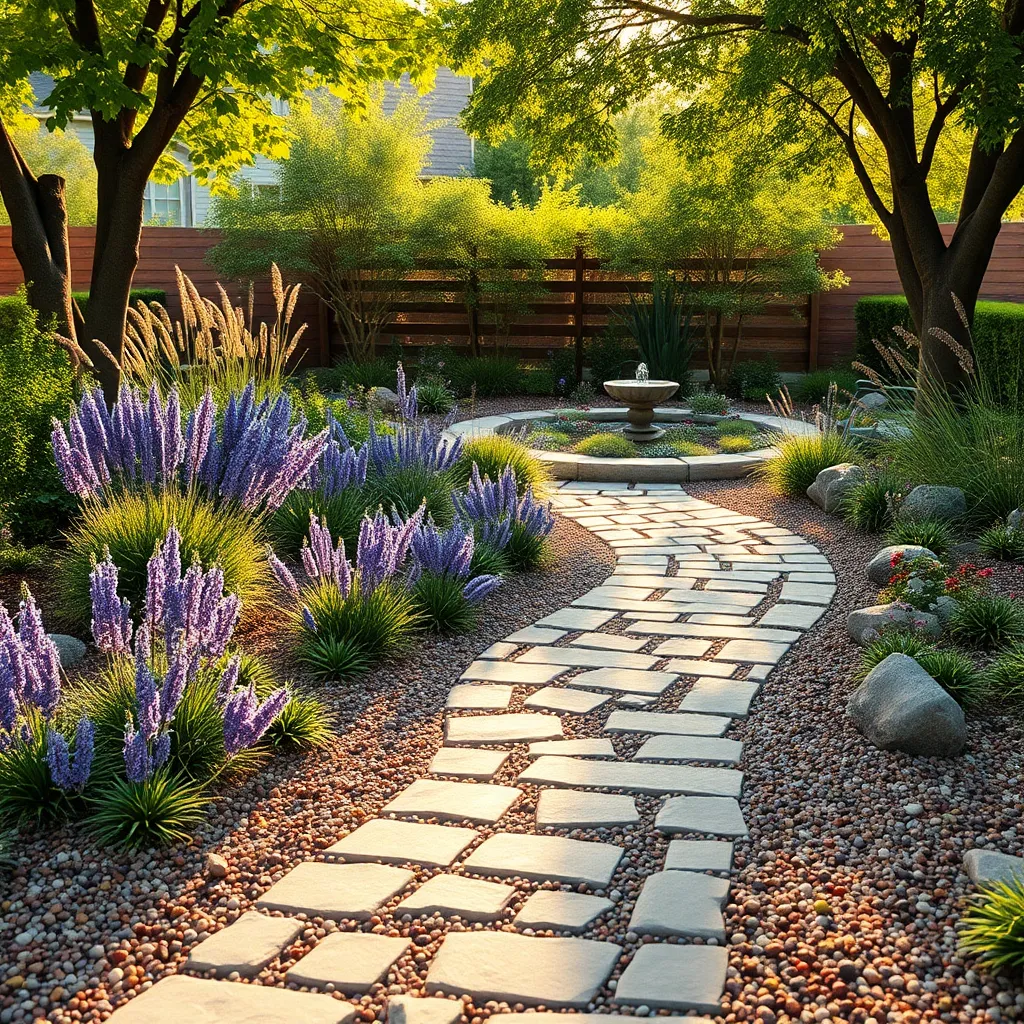
Incorporating permeable hardscapes into your garden design is an effective way to conserve water while enhancing aesthetic appeal. These surfaces allow water to percolate through, reducing runoff and helping recharge groundwater supplies.
Choosing the right materials is crucial when designing permeable hardscapes. Gravel, porous concrete, and permeable pavers are excellent choices as they provide stability while facilitating water infiltration.
Consider integrating permeable pathways and patios into your garden layout. They can be combined with drought-tolerant plants to create a beautiful and efficient water-saving garden.
For beginners, start with small projects like a gravel path or a permeable patio. Advanced gardeners can experiment with intricate patterns or different material combinations to add both function and flair to their gardens.
Opt for Colorful Gravel Paths
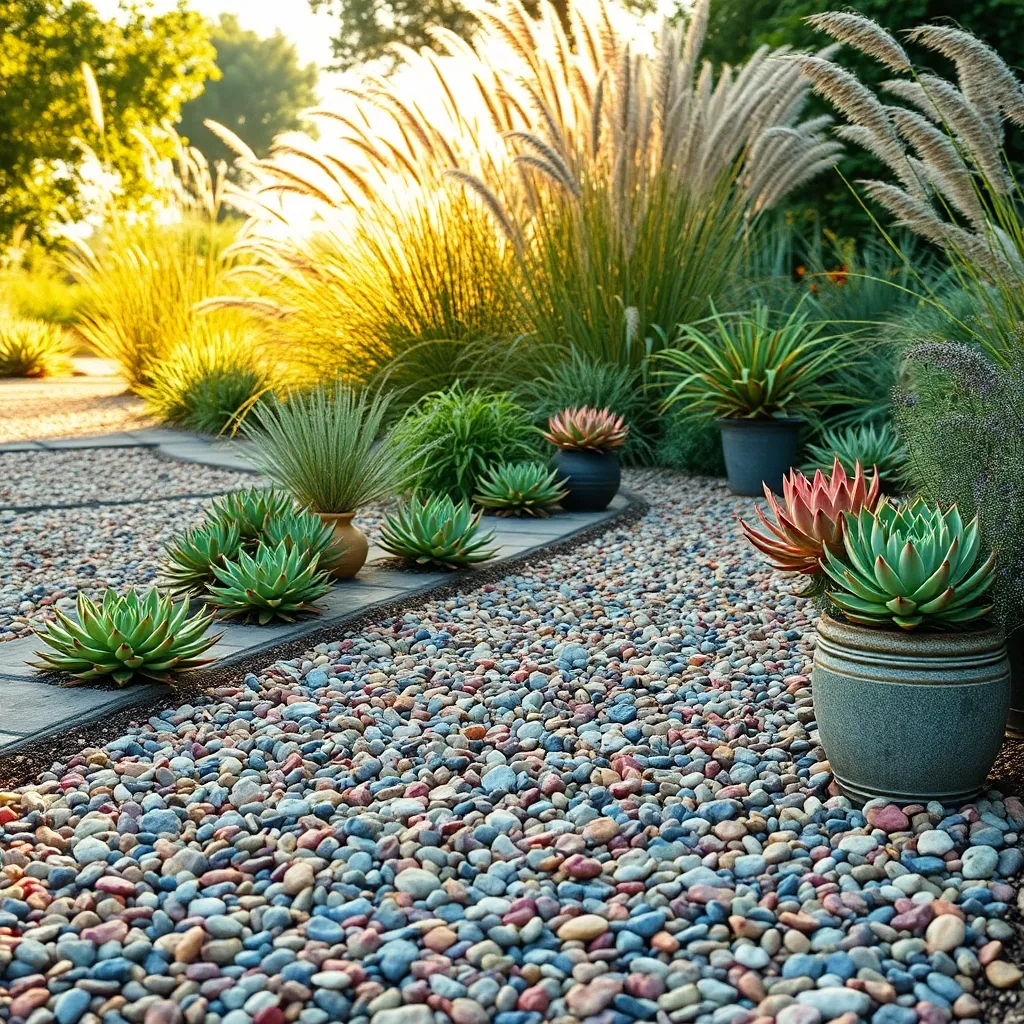
Colorful gravel paths can dramatically enhance the visual appeal of your garden while conserving water. By using bright gravel, you can create a striking contrast against your plants, making your garden pop with color without the need for additional blooms.
Consider using gravel made from natural materials like crushed granite or pea gravel, which are both durable and aesthetically pleasing. Choose a color that complements your garden’s existing palette—common options include shades of red, blue, and gold, which can add a vibrant touch.
For beginners, lay a foundation of landscape fabric before spreading the gravel to prevent weeds from growing through. This simple step reduces maintenance and ensures your path stays neat and tidy with minimal effort.
Experienced gardeners might experiment with decorative patterns or incorporate stepping stones to add texture and interest. Pairing gravel paths with drought-tolerant plants, like lavender or succulents, further enhances the water-saving benefits of your garden design.
Implement Rainwater Harvesting Techniques
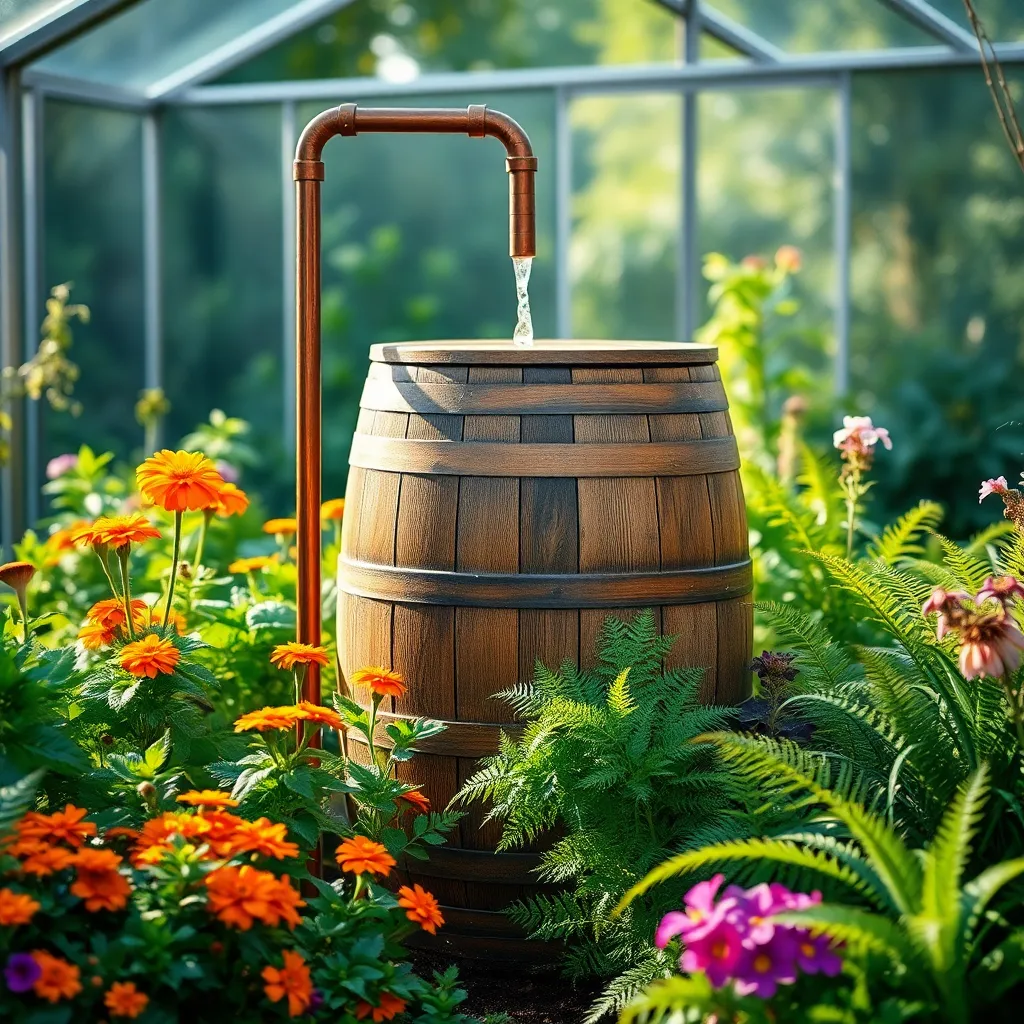
Collecting rainwater is an effective way to conserve water and provide your garden with a sustainable source of hydration. Begin by installing a rain barrel beneath your gutter’s downspout to capture and store rainwater for later use.
For a more advanced setup, consider connecting multiple barrels through a system of pipes to increase your storage capacity. Ensure that your rain barrels are fitted with a fine mesh screen to prevent debris and insects from contaminating the water.
Using rainwater for your garden can be straightforward if you implement a few strategic practices. Water your plants early in the morning or late in the evening to minimize evaporation and ensure they absorb the maximum amount of moisture.
To distribute rainwater efficiently, attach a soaker hose to your rain barrel, allowing water to seep slowly into the soil. This method is ideal for deep watering, which encourages strong root growth and healthier plants.
Add Colorful Water-Saving Containers
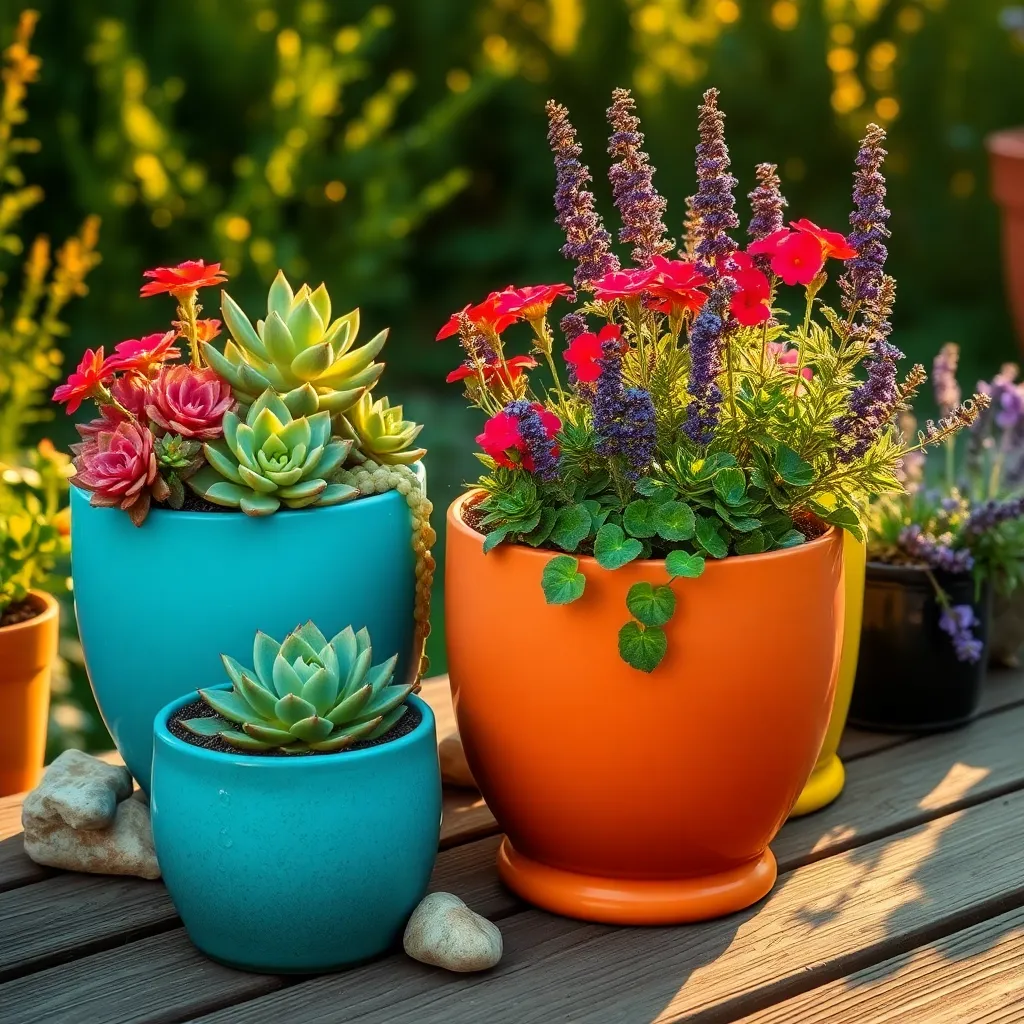
Adding colorful water-saving containers to your garden can be both visually appealing and environmentally friendly. These containers are perfect for small spaces and help conserve water by allowing you to control the amount each plant receives.
Choose containers made from materials like terracotta or glazed ceramics, which help retain moisture. Implementing self-watering containers is an excellent option, as they provide consistent moisture without frequent watering.
When selecting plants, opt for drought-tolerant varieties such as succulents, lavender, or sedums. These plants thrive with less water and can add vibrant colors and textures to your container garden.
For soil, use a well-draining mix with added perlite or sand to enhance drainage and prevent root rot. Mulching the top of the soil with decorative stones or organic mulch can further reduce evaporation and maintain soil moisture.
Regularly check the moisture level of the soil by inserting your finger about an inch deep. Water only when it feels dry to the touch, ensuring you use water wisely and prevent overwatering.
Group Plants by Water Needs
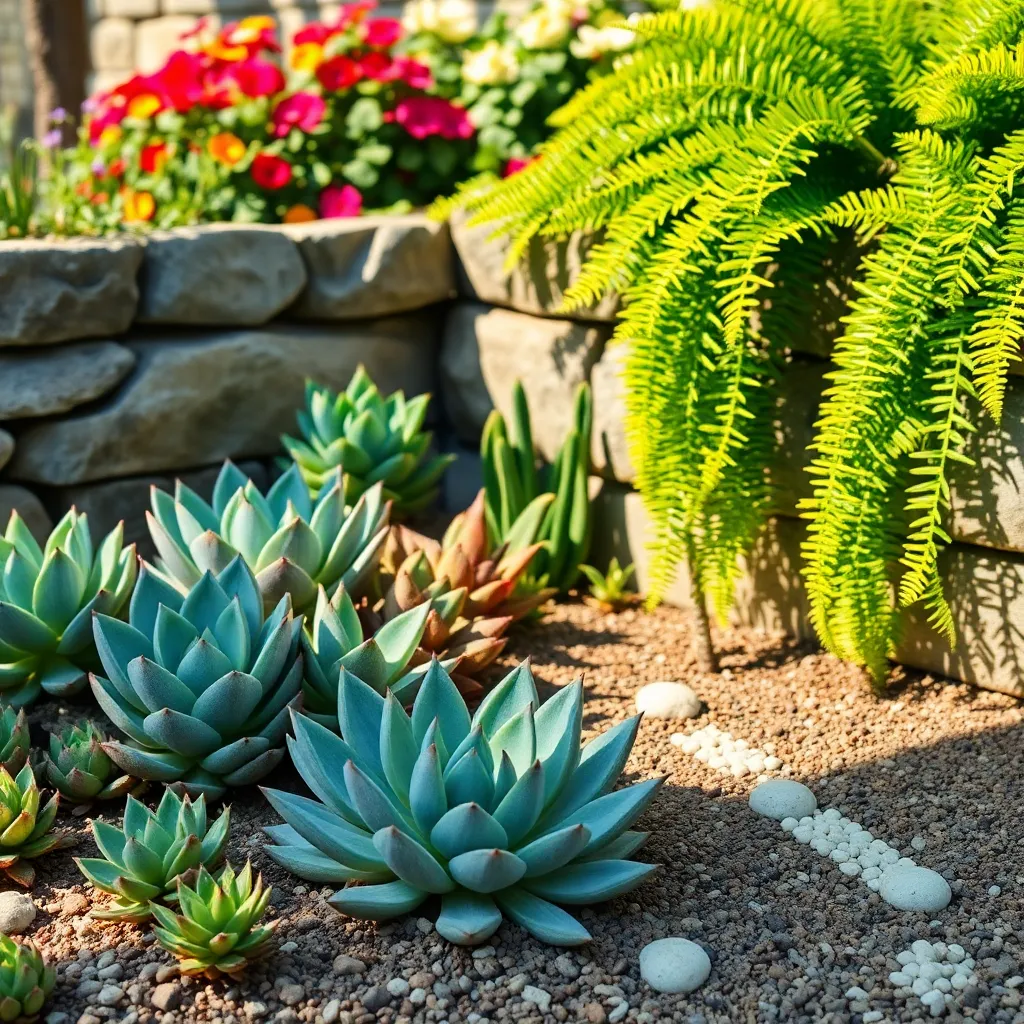
Grouping plants by their water needs is an effective way to create a colorful, water-efficient garden. This method not only conserves water but also ensures that each plant receives the appropriate amount of moisture it needs to thrive.
Start by identifying plants that require similar watering schedules and group them together. For example, succulents and Mediterranean herbs like lavender and rosemary thrive with infrequent watering and well-drained soil.
Select the right soil type to support your water-saving goals. Use a sandy or gravelly mix for plants that prefer dry conditions, while moisture-loving plants will benefit from soil enriched with organic matter like compost.
Water deeply but less frequently to encourage roots to grow deeper, enhancing drought resistance. Automate your watering with drip irrigation systems, which deliver water directly to the roots, minimizing evaporation and runoff.
Experienced gardeners can experiment with mulch to further conserve water and reduce weed growth. Organic mulches like bark or straw help retain moisture, while inorganic options such as stones can complement the aesthetic of xeriscaped areas.
Conclusion: Growing Success with These Plants
In a world where nurturing relationships and preserving resources go hand in hand, the ‘9 Colorful Water-Saving Garden Techniques’ serves as a vivid metaphor for flourishing partnerships. From embracing the art of deep-root watering to opting for native plants that require less “emotional” maintenance, each technique mirrors a fundamental relationship concept: thoughtful communication, adaptability, and mutual support. Just as mulching conserves moisture, setting boundaries protects your energy, while companion planting fosters a harmonious blend of strengths.
As you reflect on these techniques, consider initiating a small but meaningful change in your relationship today—perhaps by nurturing a habit of active listening or planning a dedicated time to reconnect. This tangible step can be as refreshing as a cool drink to a thirsty garden.
Don’t let these insights slip away; bookmark this article as your go-to guide for cultivating both your garden and your relationships. By doing so, you’re investing in a future where both love and life can thrive sustainably. Remember, every small effort contributes to a lasting relationship success, and your journey toward thriving partnerships is just beginning. Keep this resource close, and watch your relationships bloom with resilience and vibrance.

